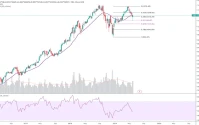The Market's Data Blind Spot
Thursday's market sell-off, with the Dow shedding nearly 800 points, wasn't just a blip. It was a stark reminder that even in our age of data saturation, information gaps can trigger serious market jitters. The immediate cause? A delayed reaction to the end of the government shutdown and the realization that crucial economic data—October's inflation and jobs numbers—might simply vanish. Stock Market Today: Tech Leads Sell-Off After Government Reopens
The market hates uncertainty, and the prospect of the Fed "flying blind," as the White House put it, spooked investors. We're talking about the potential loss of data that influences trillions of dollars in investment decisions. It's like trying to navigate a ship through a dense fog with a broken radar. The CME FedWatch tool showed the probability of a December rate cut plummeting from almost a certainty (95% last month) to roughly a coin flip by day's end. That's a seismic shift in expectations, and it translates directly to volatility.
But let’s dig a little deeper. It wasn't just the absence of data that rattled the market; it was the selective absence. September data, collected before the shutdown, might still see the light of day. But October? A statistical black hole. This creates a distorted picture. Imagine trying to predict a hurricane’s path using only data from the days before it formed, completely ignoring the storm's actual development.
And here’s where I find the narrative particularly thin. (I've seen similar patterns in post-earnings call transcripts.) The market is hyper-focused on rate cuts, treating them as the singular "bullish catalyst." But what if the underlying economic reality doesn't support those cuts? Are investors so fixated on the idea of easy money that they're willing to ignore the warning signs?

The Illusion of Precision
The financial world prides itself on precision. We talk about basis points, algorithmic trading, and real-time data feeds. But this episode exposes a fundamental vulnerability: our reliance on government-provided statistics. We assume these numbers are gospel, failing to account for the messy, human-driven processes behind them. As Capital Economics analysts pointed out, statisticians will now be forced to "survey firms and households about past events to fill in the gaps." That's a recipe for error.
Think of it like this: imagine a high-resolution photograph pieced together from blurry snapshots and secondhand descriptions. It might look convincing at first glance, but the details will be distorted. The unemployment rate, hours worked – these are not abstract concepts; they represent the livelihoods of millions of people. To potentially base policy decisions on incomplete or inaccurate data is, frankly, irresponsible.
The White House press secretary, Karoline Leavitt, claimed Democrats "may have permanently damaged the federal statistical system." Strong words, but the damage goes beyond partisan politics. It highlights a systemic risk: the vulnerability of our economic models to disruptions in data collection.
So, What's the Real Story?
The market's tantrum wasn't just about missing data; it was about the illusion of control being shattered. We crave certainty, especially when it comes to our investments. But the truth is, we're often navigating in the dark, relying on imperfect information and hoping for the best. The data blackout served as a harsh reminder that the numbers, no matter how precise they seem, are only as good as the system that produces them. And that system, it turns out, is more fragile than we'd like to believe.










